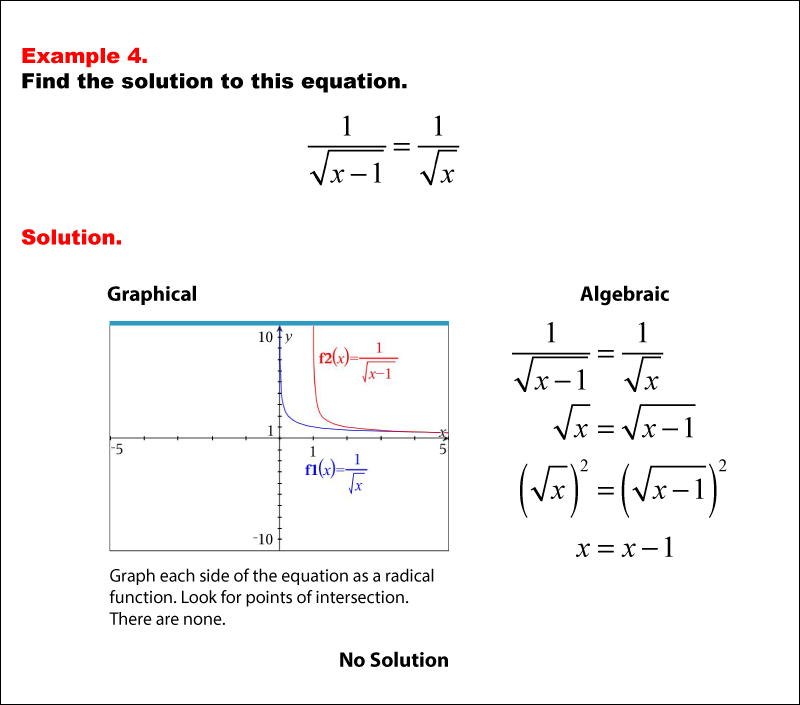
Display Title
Math Example--Solving Equations--Extraneous Or No Solutions--Example 4
Display Title
Extraneous Or No Solutions--Example 4

Topic
Equations
Description
This example deals with an equation involving square roots on both sides, a common scenario for producing extraneous solutions. The standard approach to solving such equations is to isolate the radicals on opposite sides of the equation and then square both sides to eliminate the radicals. This process, however, can introduce extraneous solutions. After squaring, the equation typically becomes a quadratic equation, which can be solved using standard techniques like factoring or the quadratic formula. The crucial step in this example would be the verification of the solutions obtained. Each solution must be checked by substituting it back into the original equation. This verification often reveals that one or more of the algebraically correct solutions fail to satisfy the original equation. The failure usually occurs because squaring both sides of an equation is not always a reversible operation. It can introduce additional solutions that work for the squared equation but not for the original one.
For a complete collection of math examples related to Solving Equations with Extraneous or No Solutions click on this link: Math Examples: Solving Equations with Extraneous or No Solutions Collection.
| Common Core Standards | CCSS.MATH.CONTENT.HSA.REI.A.2 |
|---|---|
| Grade Range | 9 - 12 |
| Curriculum Nodes |
Algebra • Radical Expressions and Functions • Radical Functions and Equations • Rational Expressions and Functions • Rational Functions and Equations |
| Copyright Year | 2020 |
| Keywords | extraneous solutions |